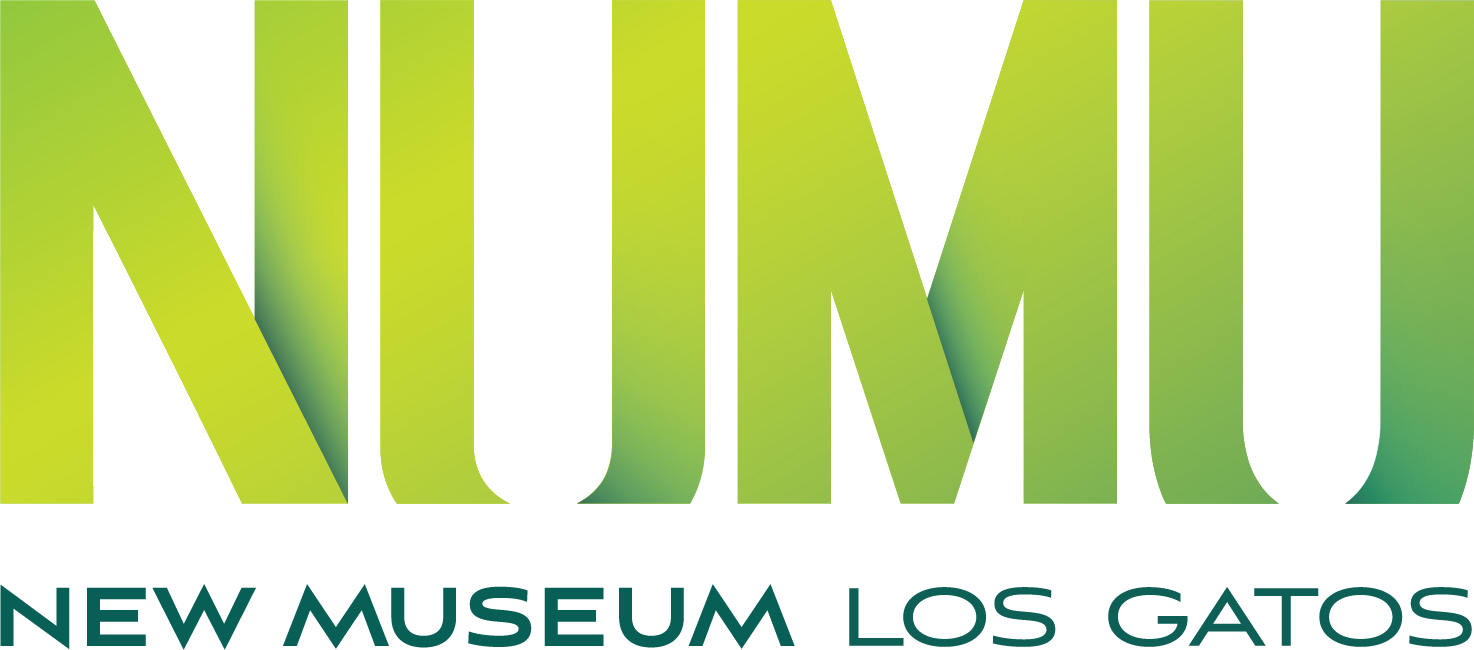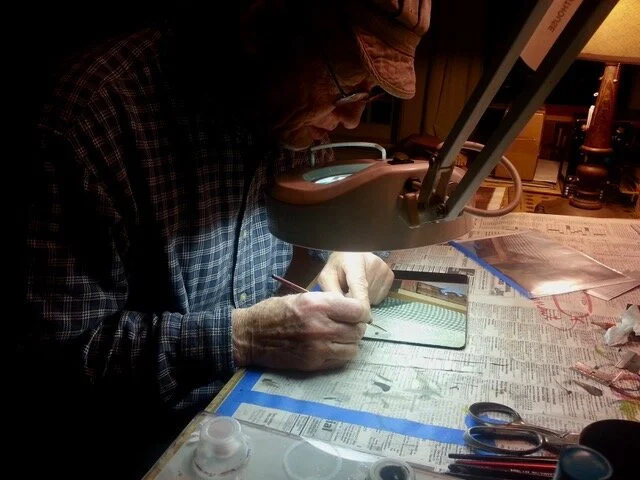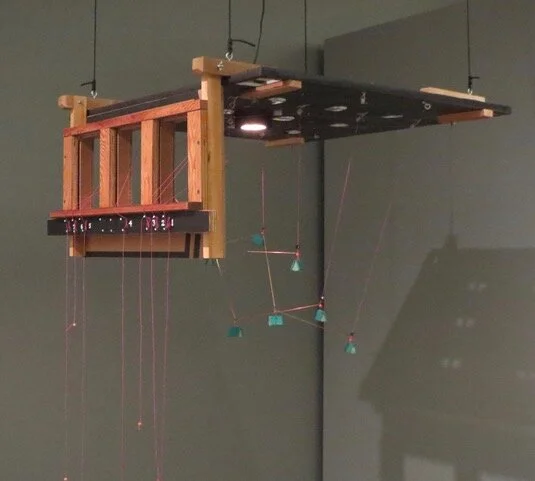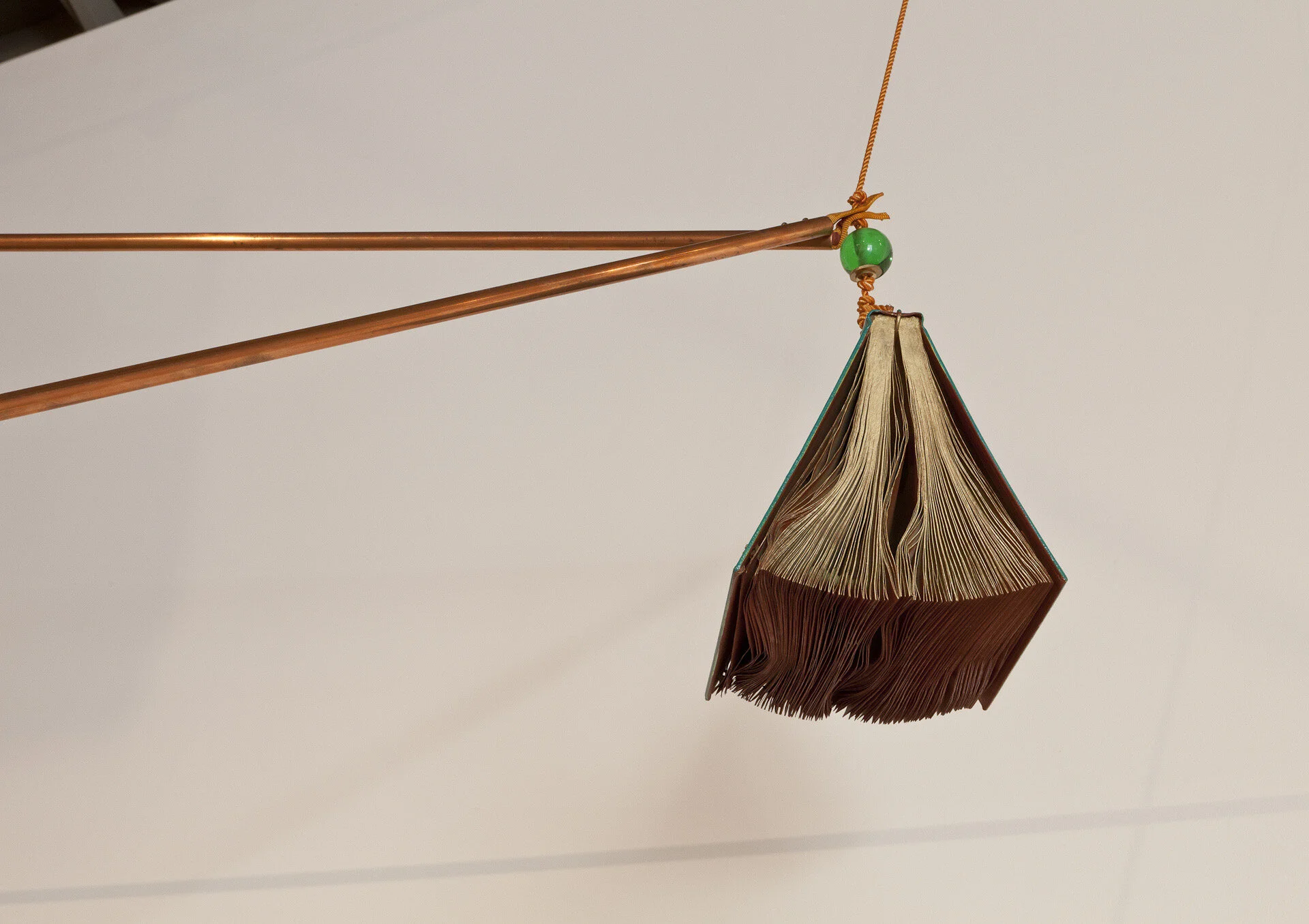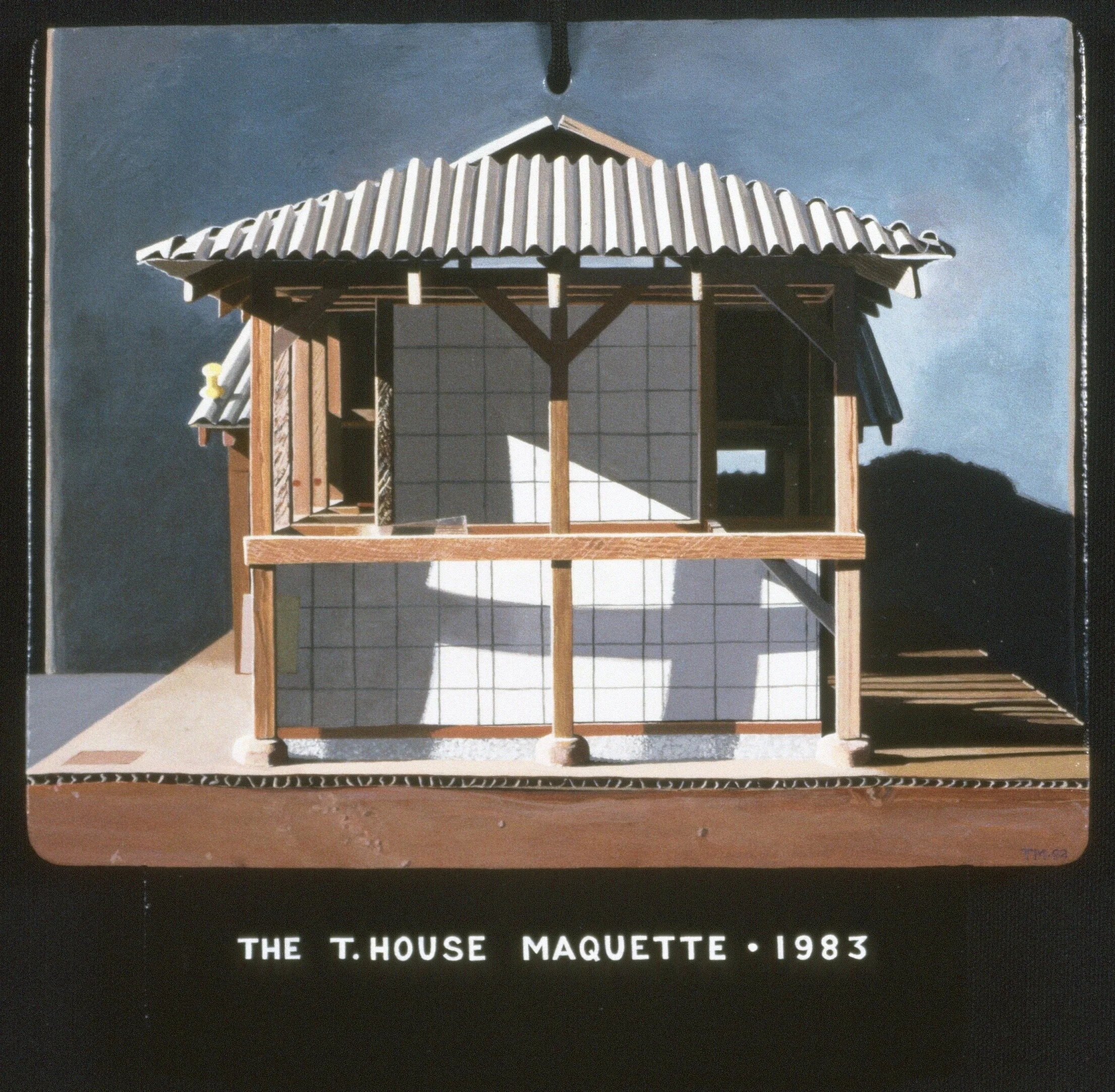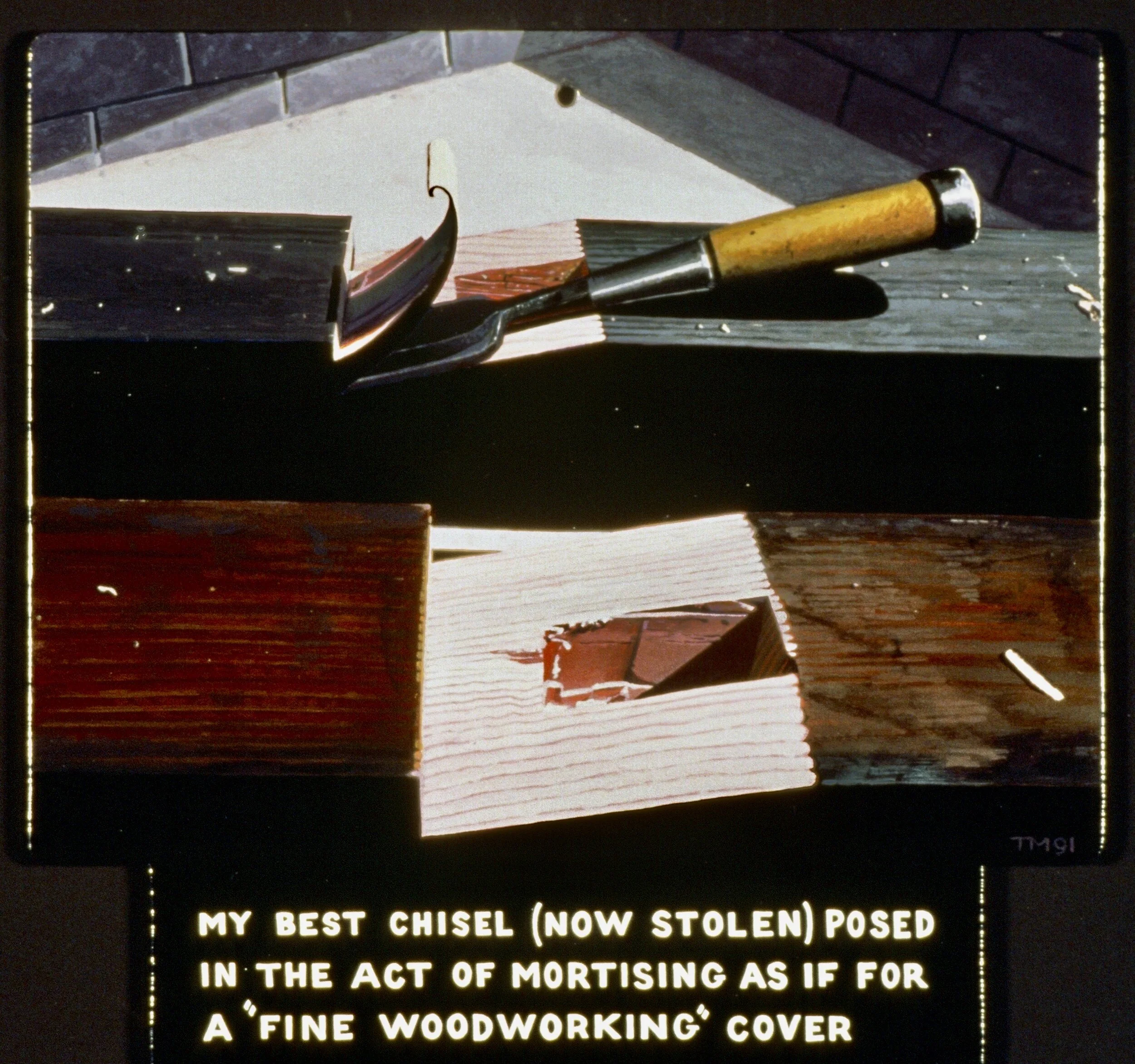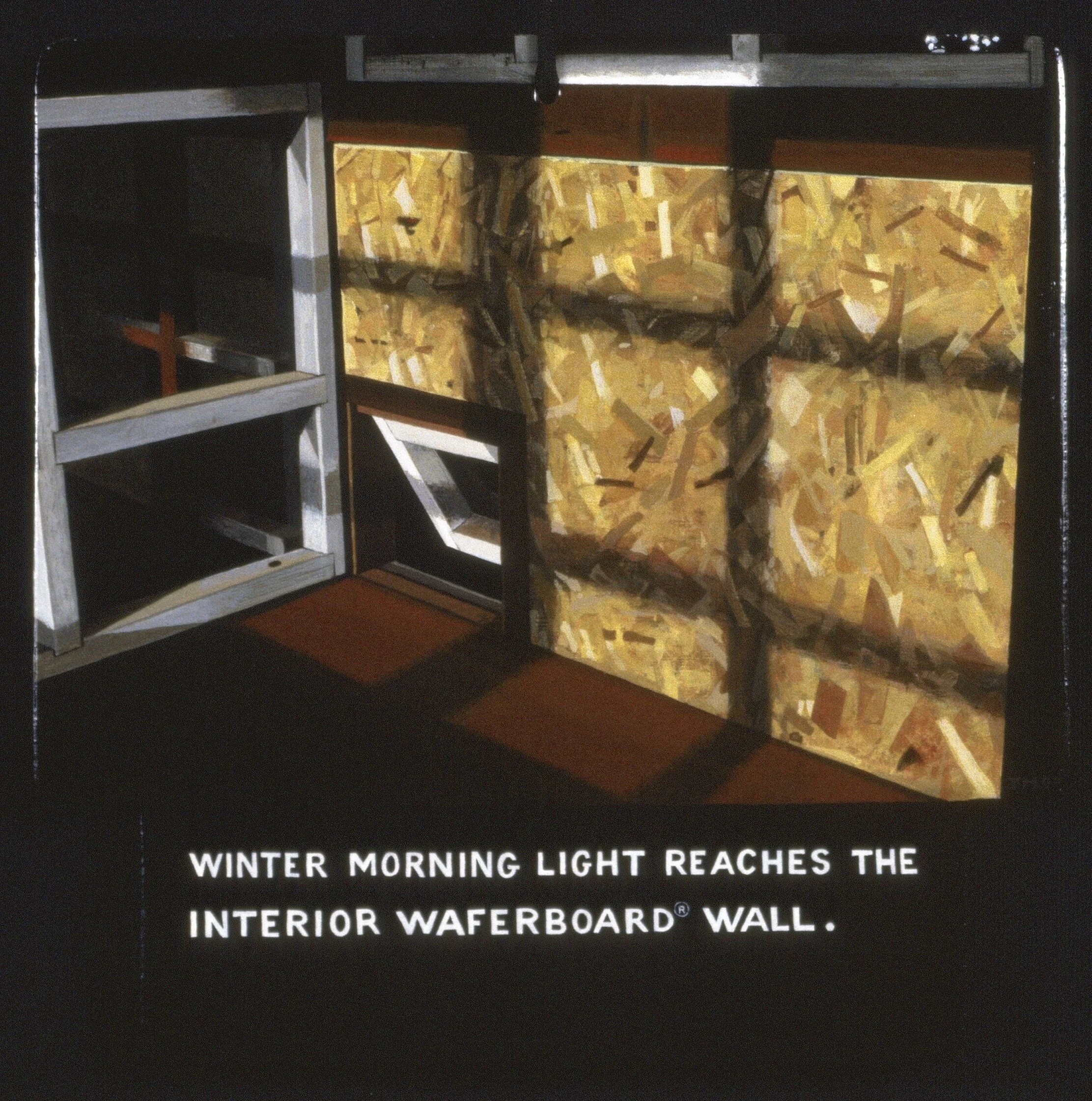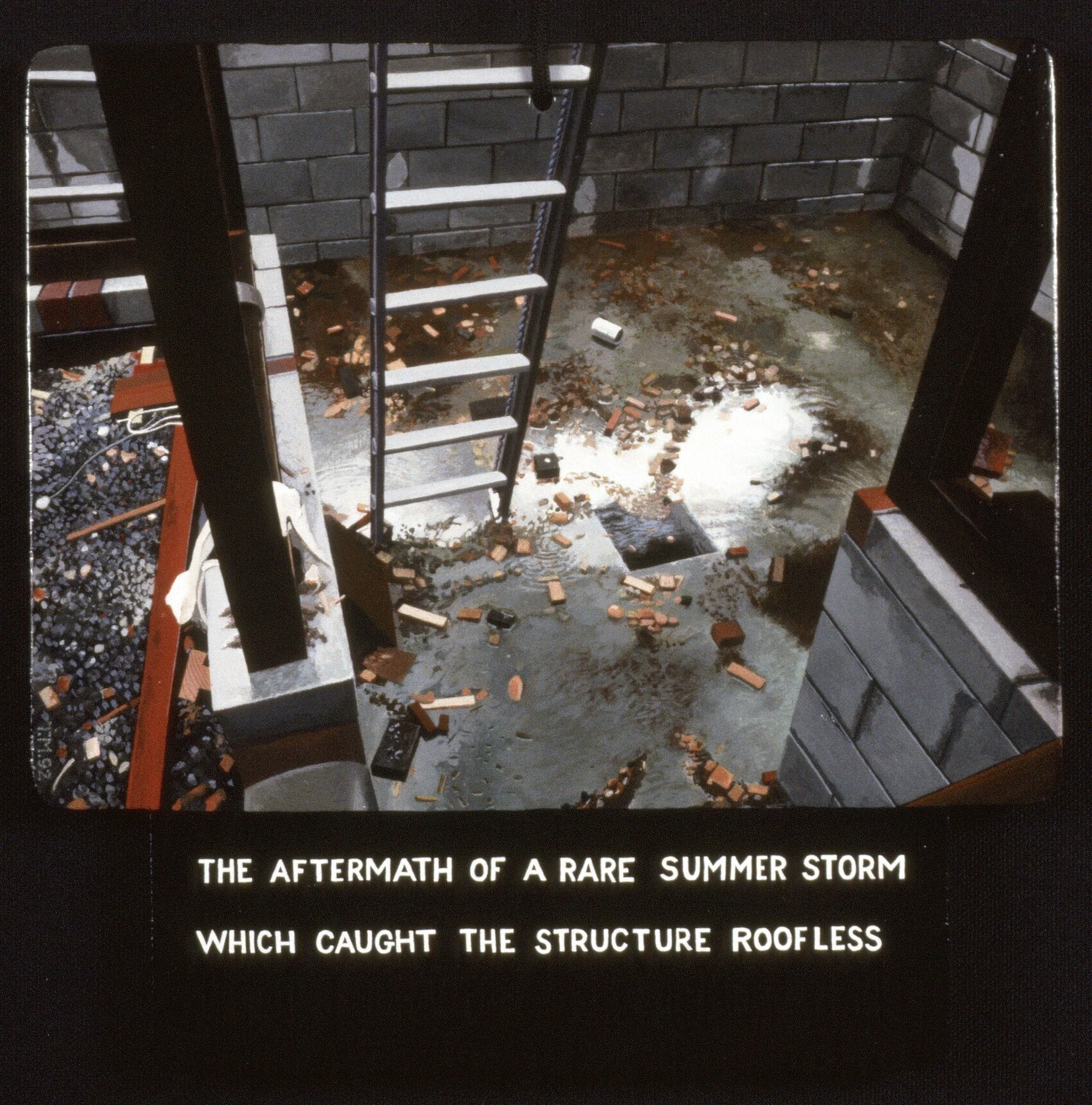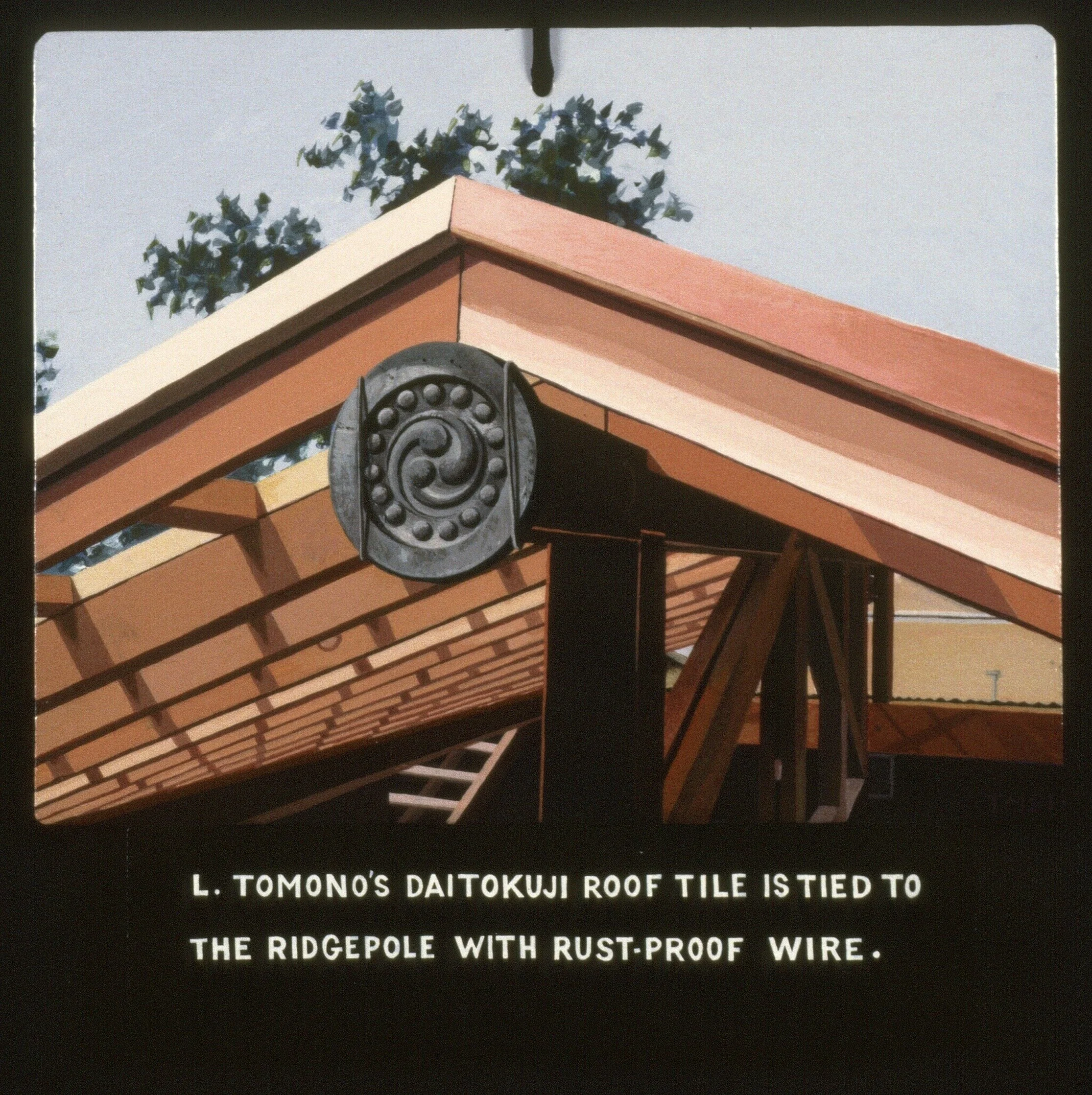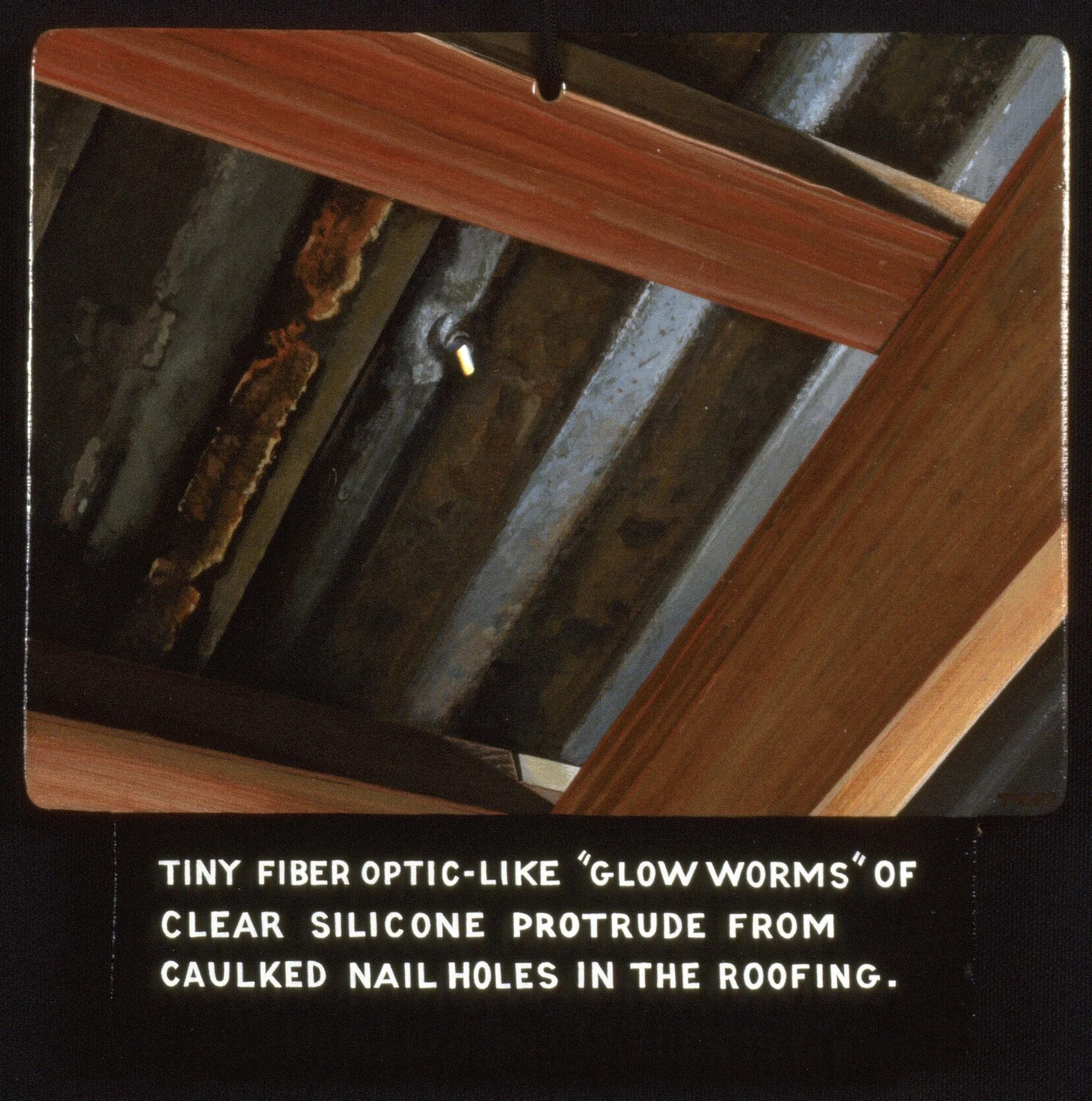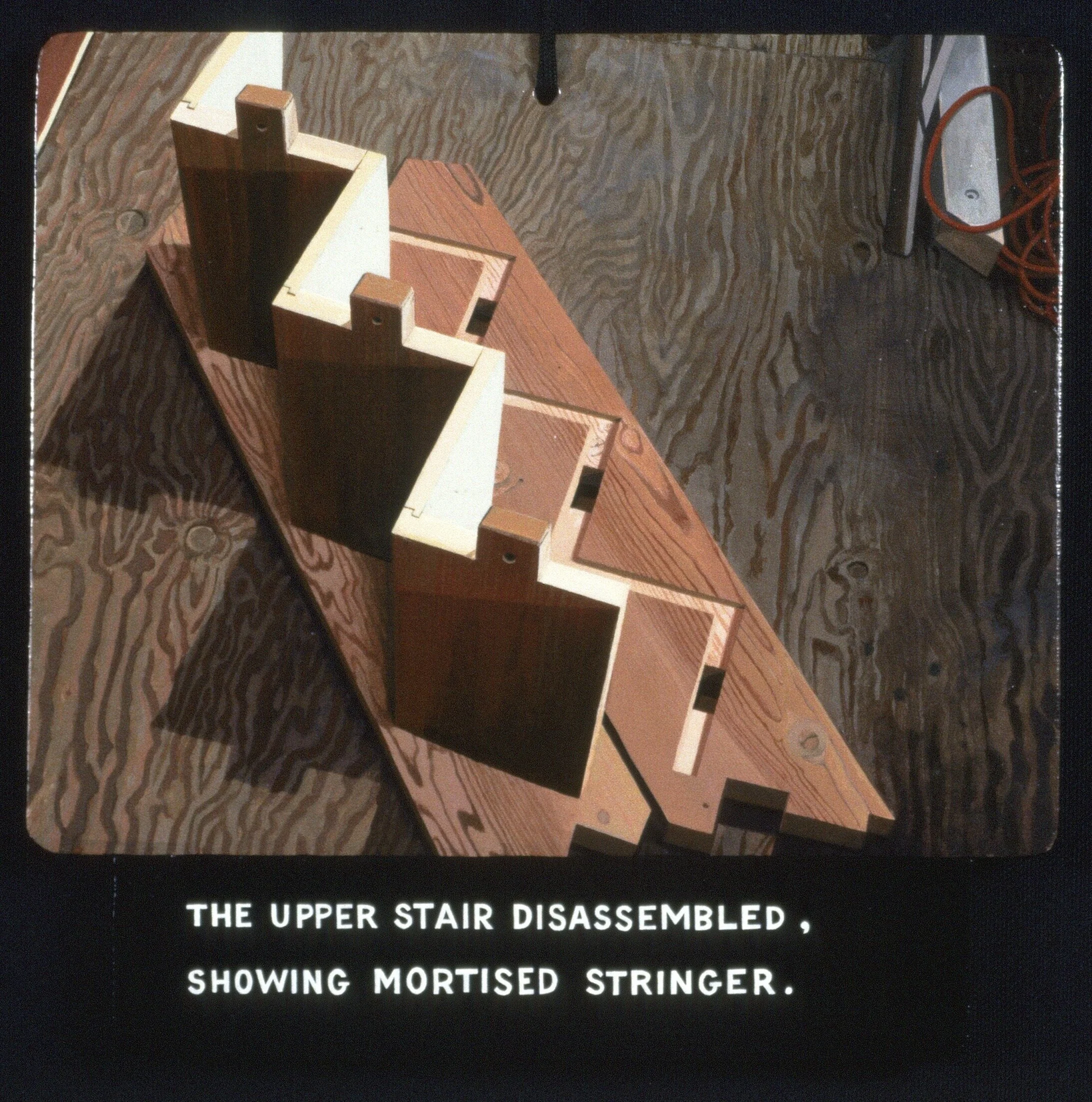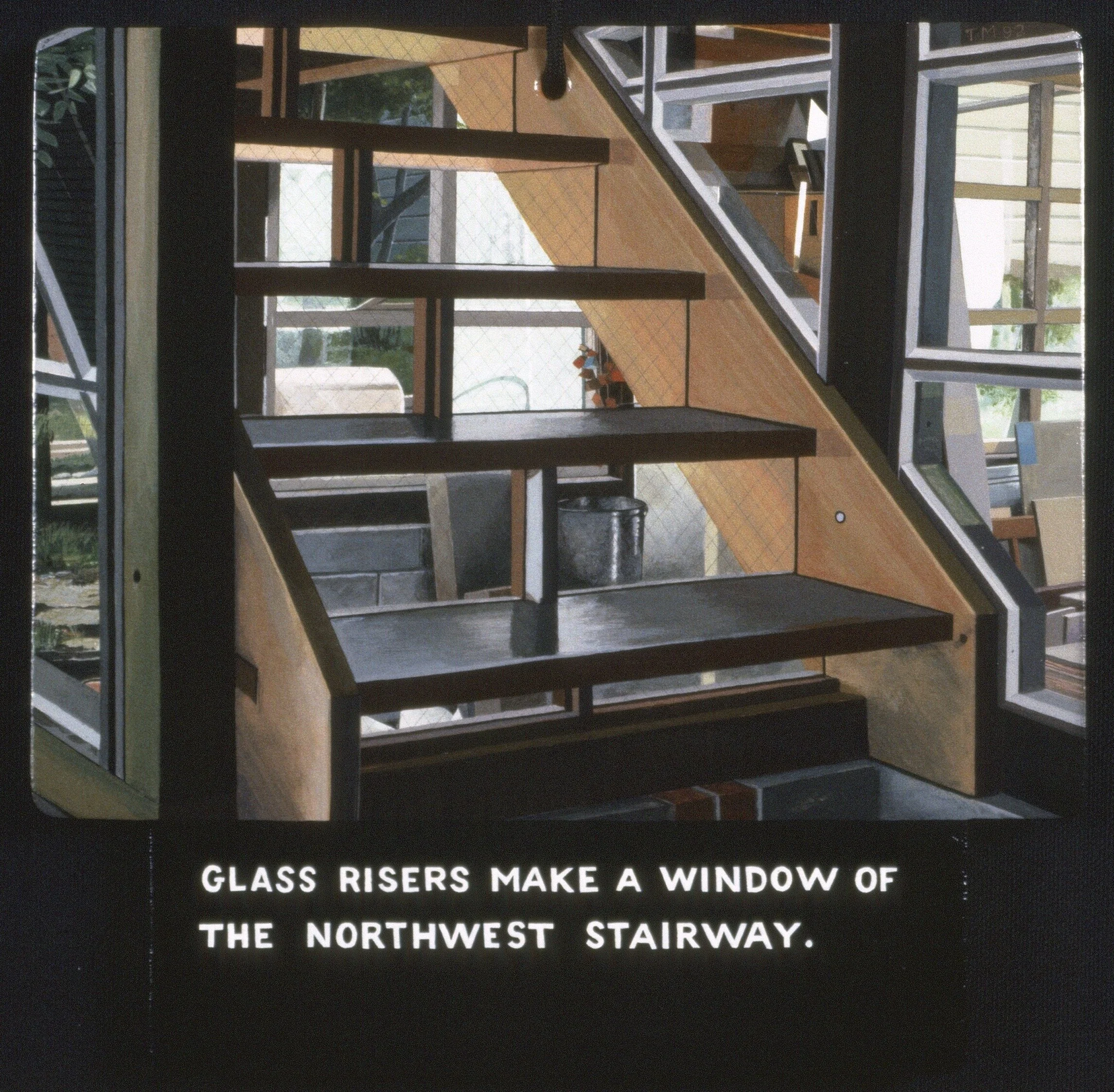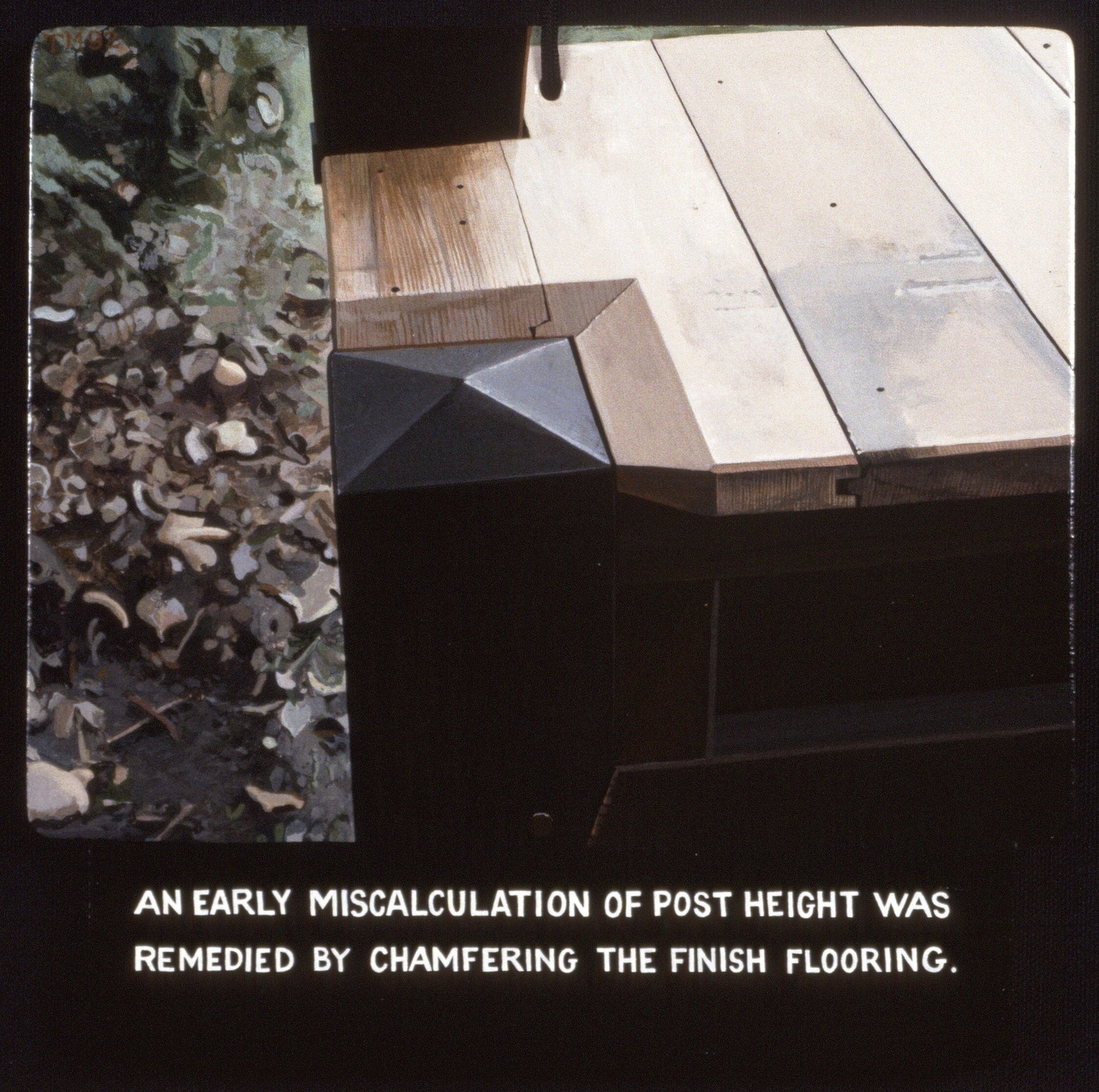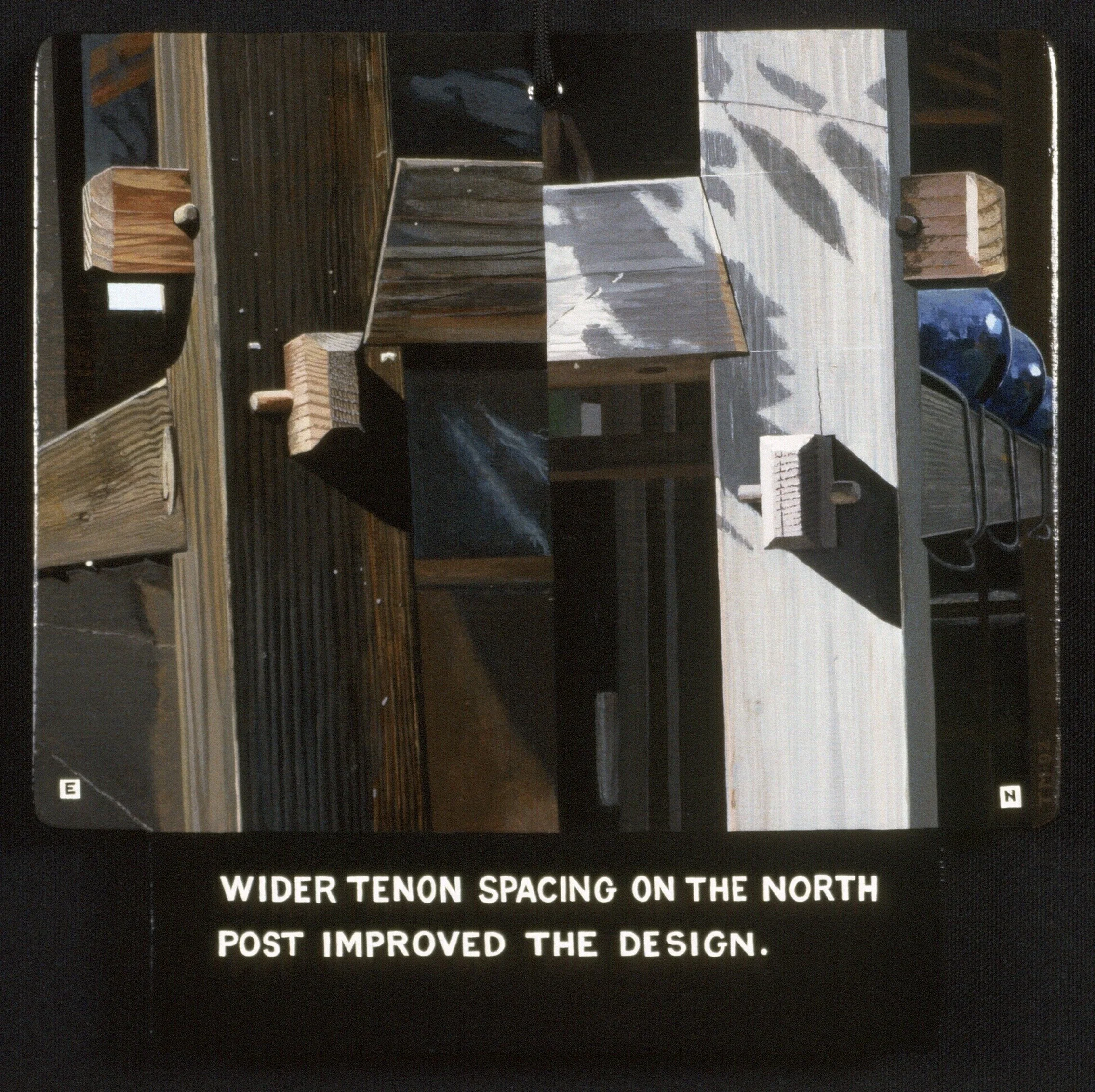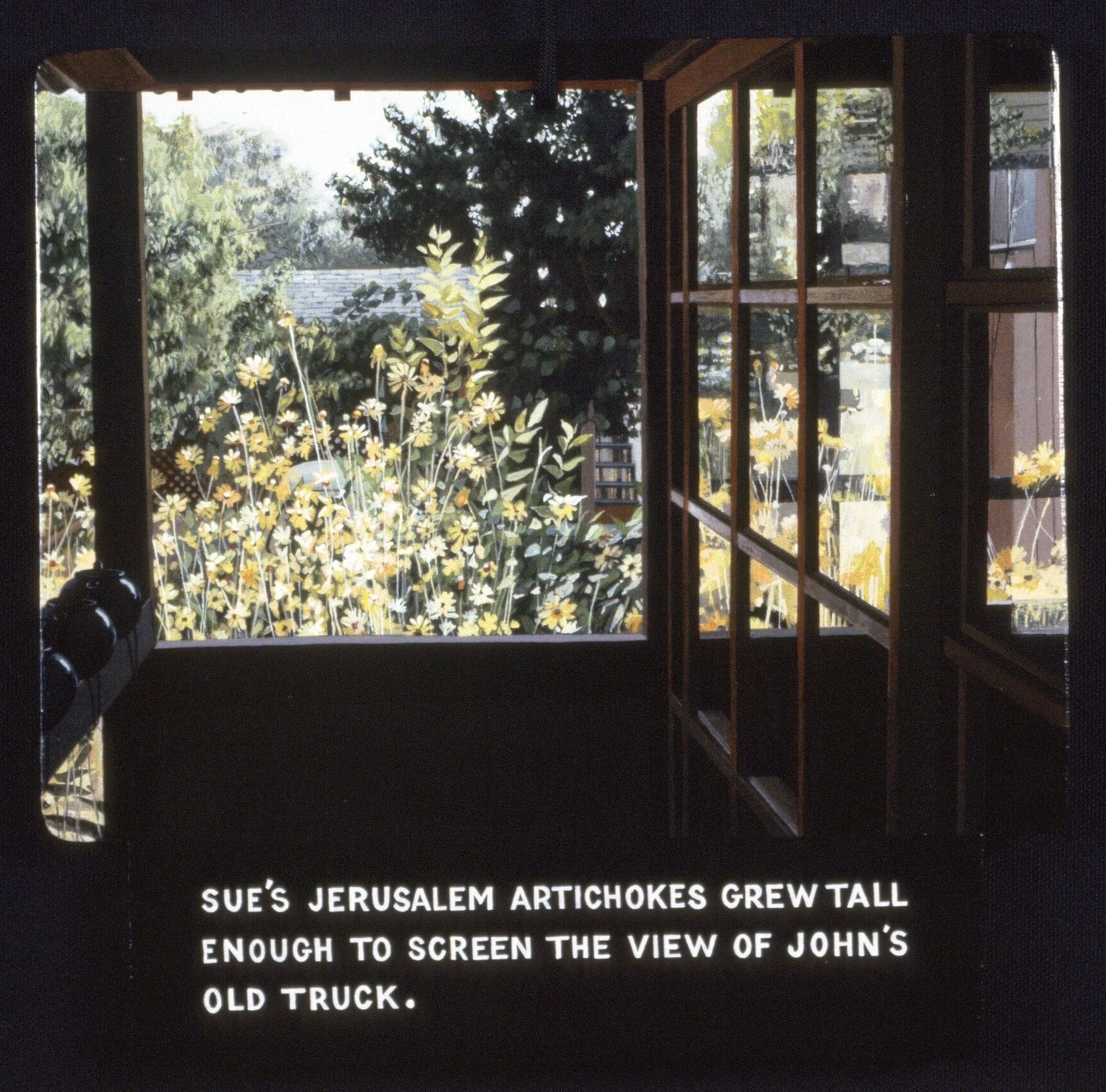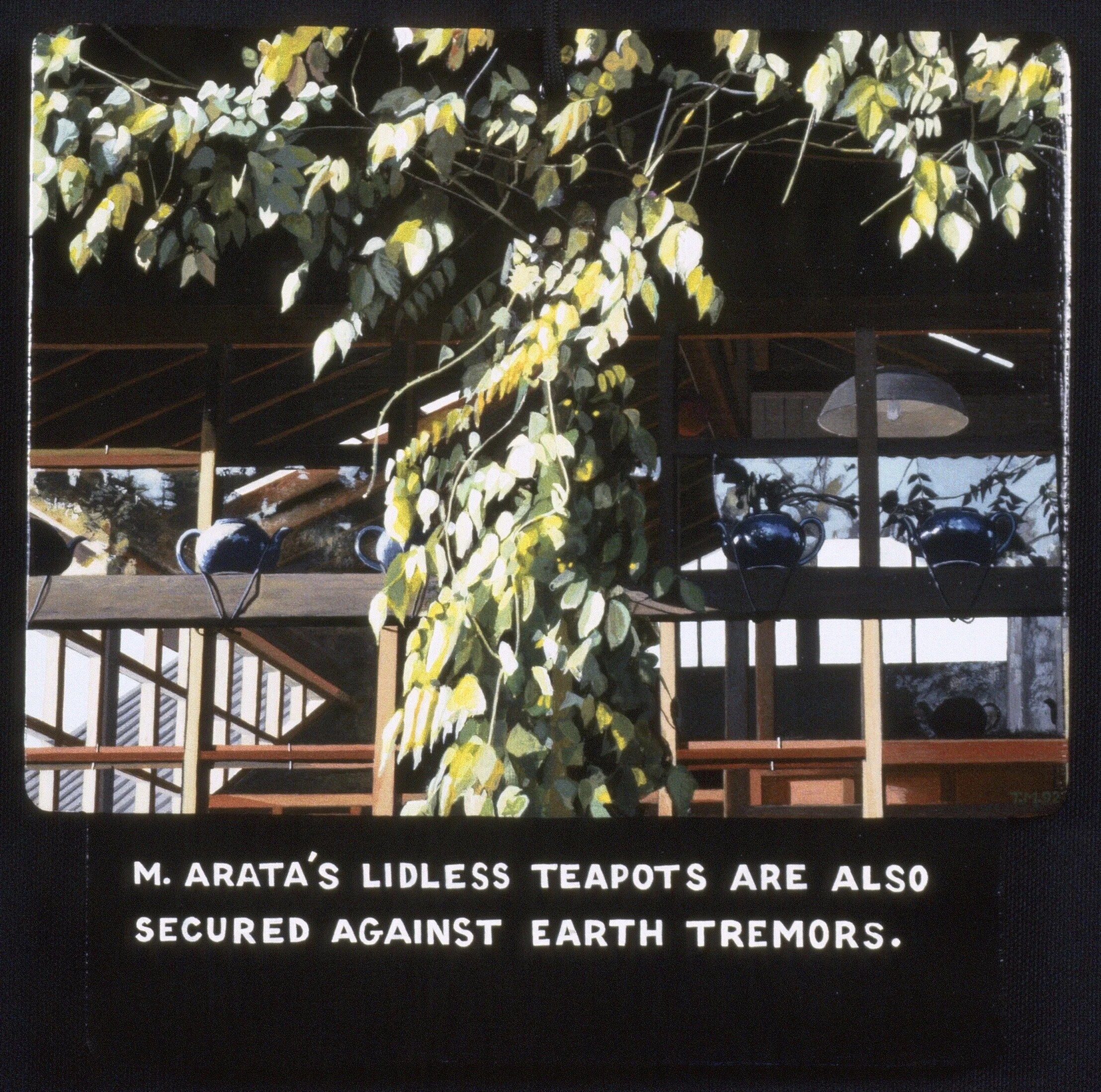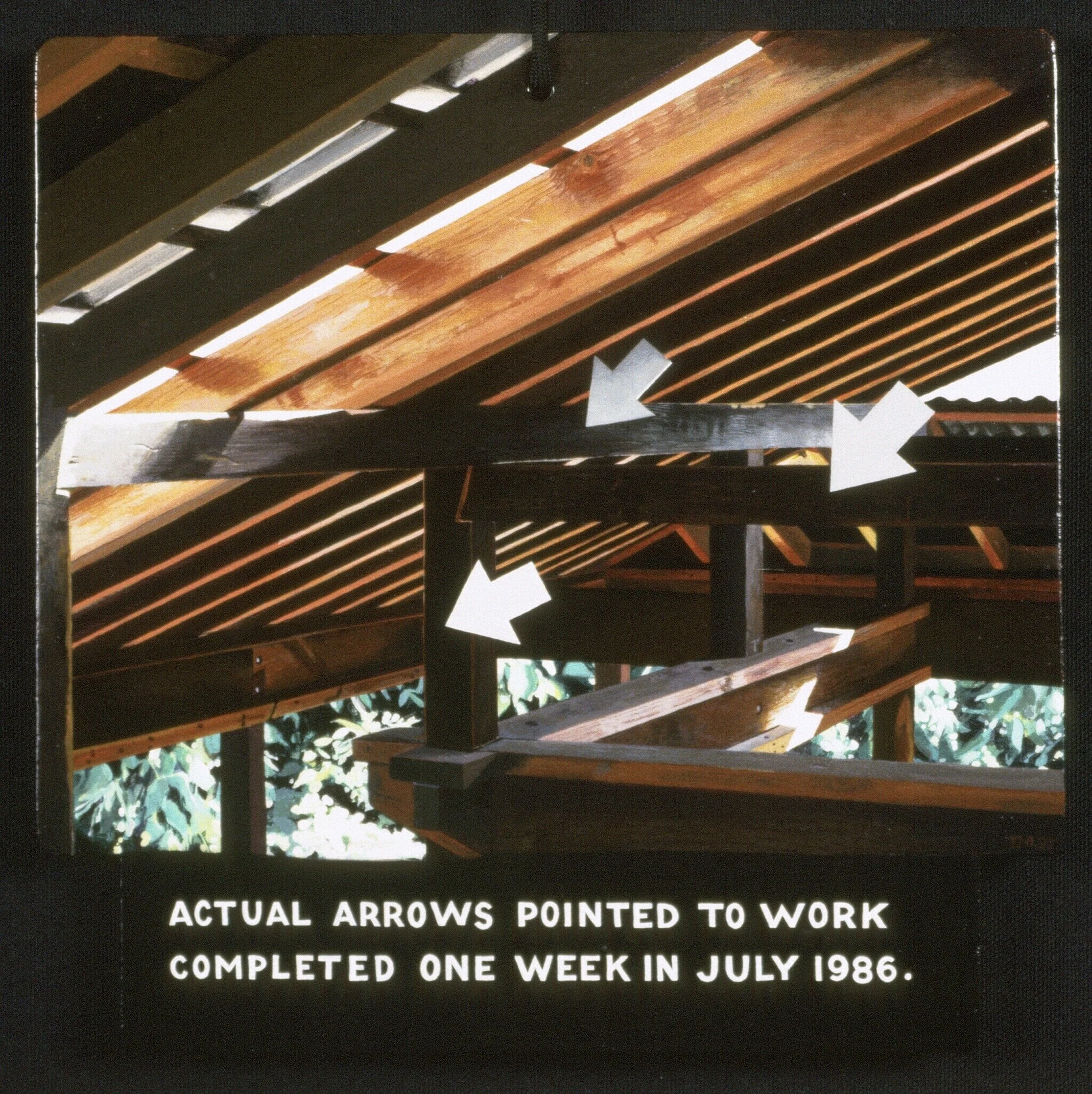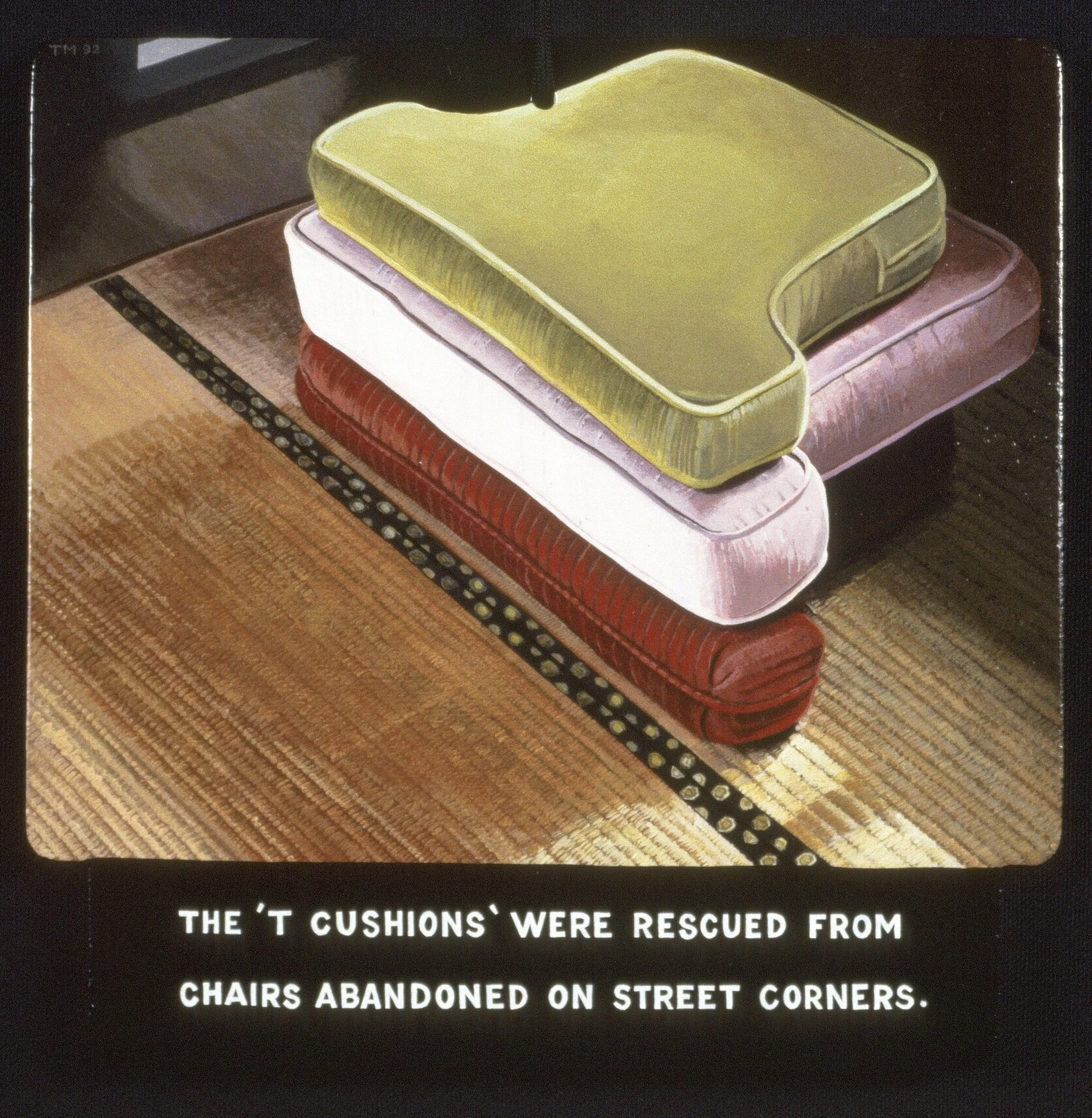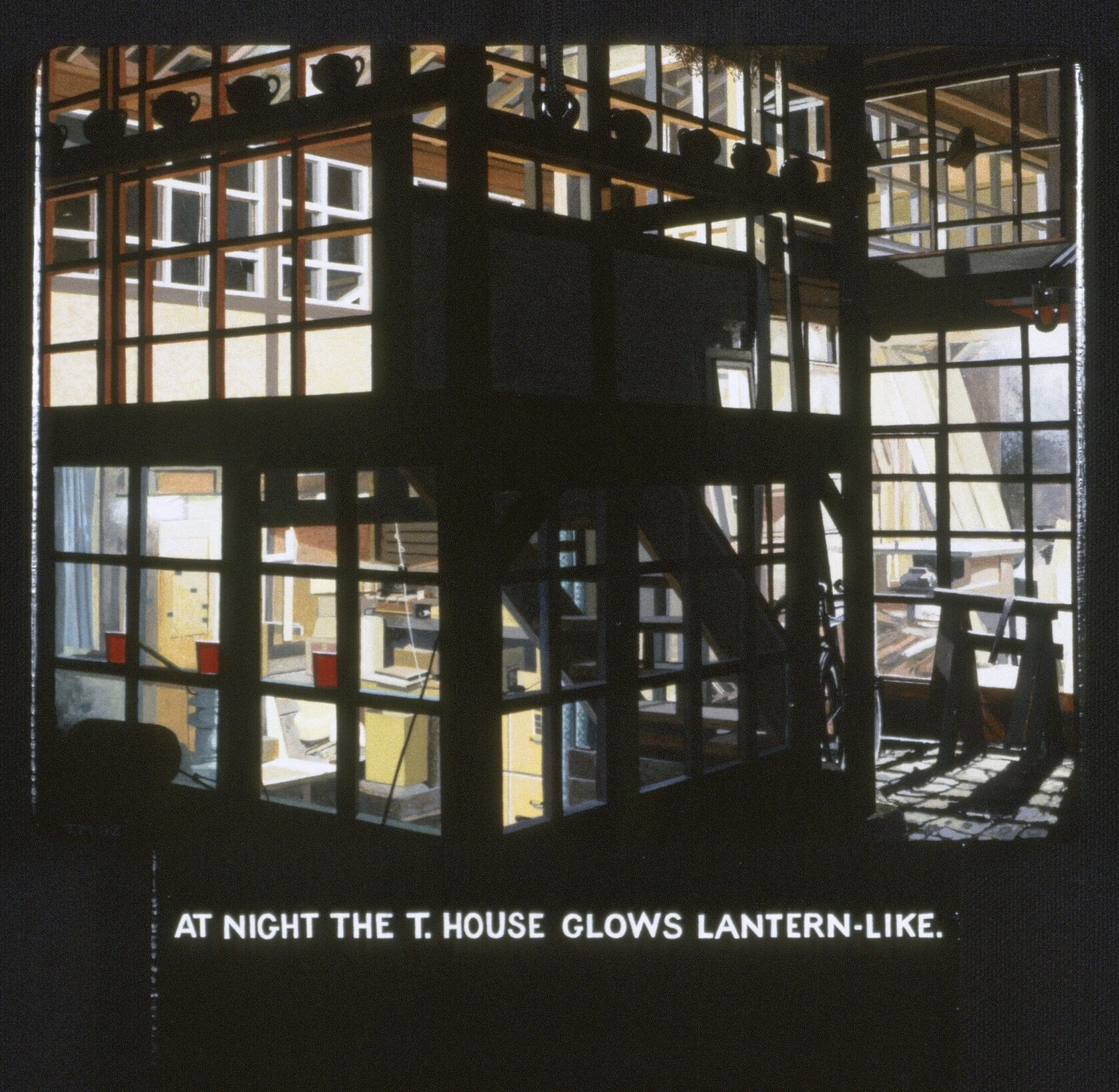This virtual tour feature dual exhibitions showcasing the work of Tony May,
presented in the Mike & Alyce Parsons Reception Area and the Spotlight Gallery.
The exhibitions In the Artist’s Studio featuring Tony May and TONY MAY: Views of the T. House are presented at New Museum Los Gatos, from February 5 to May 9, 2021.
In the Artist’s Studio: Featuring Tony May
An artist's workplace can be mysterious, solitary inner sanctum. NUMU's In the Artist's Studio project provides a glimpse into the intimate setting for the creative process.
In the Artist’s Studio: Featuring Tony May is a view of May’s interior world, and his highly iterative creative process. Follow May on his journey of creating the site-specific installation for the San Jose Museum of Art, “Variable Book Construction (Bookmobile),” (1991-1995).
Tony May creates from inside his craftsman style home and the studio, the T. House, he has built over the antique garage on his property in downtown San Jose, CA. His spaces are layered with reclaimed material waiting to be put to good use, idiosyncratic objects, and tools that each hold their own story. For sculpture and carpentry, he employs a collection that includes a planer May inherited from his father’s farm in Wisconsin, and Japanese saws gifted from fellow artists. His built environment glows with warmth and balance.
On this journey into the artist’s studio, Tony May shares his process of creating the site-specific installation “Variable Book Construction: (Bookmobile),” (1991-1995) for the San Jose Museum of Art, where it is a part of the permanent collection. He plans the piece first on paper, making drawings of each detail like the connection mechanisms, sketching how the 3-dimensional composition will sit in relation to its surrounding architecture. May considers that the historic function of the original San Jose Museum of Art building was a library (just as the New Museum Los Gatos building was originally a library), and muses that the mobile “suggests that ghosts of books still hover around the building.”
After preliminary drawings, the artist turns to a modeling process, building a scale maquette of the installation or sculpture. Some of these ideas and early prototypes might inspire paintings of their own; a metaphase in which May documents his own process in further works of art. We see this in the acrylic on panel painting “Early Bookmobile Prototype C. 1990,” (2019). For this project, May built the fully functional and variable “Bookmobile Maquette,” recently donated to NUMU’s permanent collection by Karla Albright and Chris Burkhart of Los Gatos. Complete with miniature scale books, copper tube, red thread, and its own lighting system, this maquette is an example of May’s high craftsmanship and concept. If you are out for a walk in downtown Los Gatos, you can see it installed from Civic Center courtyard, adjacent to NUMU’s front door.
Captions:
“Early Bookmobile Prototype c. 1990,” 2019.
Photos (3) of “Bookmobile Maquette,” 1991.
Sketch of book attachment point. Courtesy of the artist.
Detail of “Variable Book Construction: Bookmobile,” 1991. Photo by David Pace.
Ceiling plan of attachment points at San Jose Museum of Art for original installation of “Variable Book Construction: Bookmobile.” Courtesy of the artist.
Special thanks to Crystal Birns for photographing the “Bookmobile Maquette” details and TONY MAY: Views of the T. House installation virtual tour in the Spotlight Gallery.
Click to enlarge. Transcribed at right.
Notes on the
“Variable Book Construction: (Bookmobile)”
by T. May
For this installation I am returning to the use of books, objects (or medium) which served as a main focus of my work for a period in the mid 1970’s.
Their use here refers to a forum function of the old wing of the S.J.M.A. – that of public library for the City of San Jose. The piece recalls the building as I first knew it upon arriving in the area in the late 1960’s. It suggests that ghosts of books still hover around the building and serve to keep us in touch with our history (& humble origins).
The subtitle of the piece obviously involves a pun which refers simultaneously to the old library and to the work of A. Calder whose artwork is no stranger to the community or to the museum. His work was shown in a major show here several years ago; his art adorns the museum logo and probably not coincidentally, former S.J. Mayor Janet Gray Hayes who has been very active in the development of the new wing of the museum is a relative of Calder. The piece pays tribute to Calder (& might be thought of as a home-grown Calder substitute.)
Since books are loaded objects in terms of their actual as well as metaphorical & symbolic content the piece may literally bear the weight of these many possible meanings. Nonetheless the piece is intended to be light and celebratory in nature (sort of a frozen or slow motion firework).
It is also a primitive 19th Century type device straining to reach the 21st Century.
Tony May began his career as an artist in his native Wisconsin, and earned an MFA from the University of Wisconsin-Madison in 1966, and learned the craftsmanship of carpentry and other practical skills from his father on their family farm. In 1967, May moved to San Jose, CA, where he lives and taught art at San Jose State University for over 30 years. Tony May has exhibited his meticulous paintings and conceptual, whimsical structures to international acclaim. NUMU’s exhibitions will continue that legacy, inviting visitors for a timely reflection on the details of our never more familiar quotidian surroundings with patience, reverence, and a sense of humor.
TONY MAY: Views of the T. House
The old masters used art to document the substance of daily life in a world where society moved slowly. Their paint portrayed light and texture with patient and dedicated observation. Today, in this period of quarantine and isolation, we are confronted with an opportunity to consider our lives with similar slow observation. Tony May’s installation and series of paintings, Views of the T. House (1991-1992), show how a kind of slow, focused study of a subject that is close to home can reveal moments of beauty, irony, and growth.
The subject, the T. House, is a handmade building—initially constructed over the course of ten years and still evolving—in the style of Japanese carpentry and woodworking. Each of the 18 compositions are a record of its material details and May’s process building it. May reflects snapshots of his accumulated experience with practiced introspection, balanced by moments of humor in his signature captioned frames.
The viewer sees the series of paintings installed with May’s bespoke system of poles and panels that direct the viewer’s path through the gallery. Though the series has been previously installed with his signature “T” shape orientation, this particular arrangement is unique for New Museum Los Gatos.
TONY MAY: Views of the T. House is generously supported by the Town of Los Gatos.
TONY MAY
Views of the T. House, 1991-1992
Series of 18, acrylic on panel
Hung on painted muslin, cord, and bamboo
Courtesy of George Adams Gallery
Meticulous photo-realistic paintings document moments in the progression of May’s idiosyncratic, functional, and on-going construction project, the T. House—a full scale installation on May’s San Jose property, that features detailed craftsmanship and Japanese-style carpentry. May captures the details like the grit of cinder blocks in the foundation wet after a rainstorm, and places each moment in context with graphic novel style captions on a crisp black frame. The first and last images bookend the process, while the other 16 are not chronological.
TONY MAY
The T. House Maquette, 1983
Wood, glass, cardboard
Courtesy of the artist
As another part of the process to develop the T. House, May built a scale model, with self contained light.
Learn more about Tony May, here. WEBSITE
NOTE FOR MOBILE USERS: Artwork title and descriptions can only be viewed on a desktop/laptop computer.
All images copyright of the individual artist. Do not use without permission.
In The Artist’s Studio featuring Tony May was made possible by the generous support of The Borgenicht Foundation and the Town of Los Gatos. The Borgenicht Foundation supports social justice, conservation and historic preservation, the arts, health, and education.
Views of the T. House is generously supported by the Town of Los Gatos.
